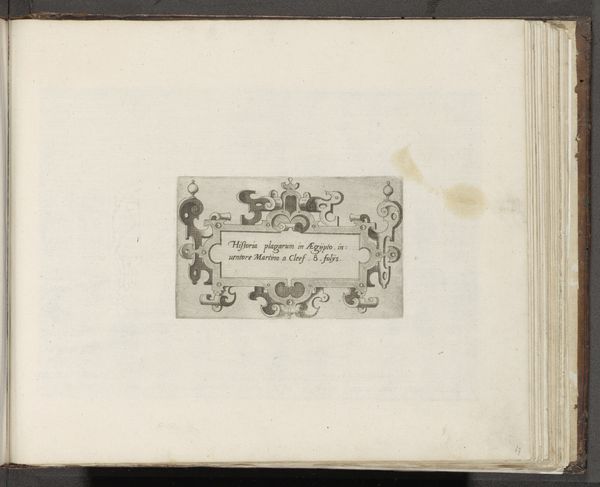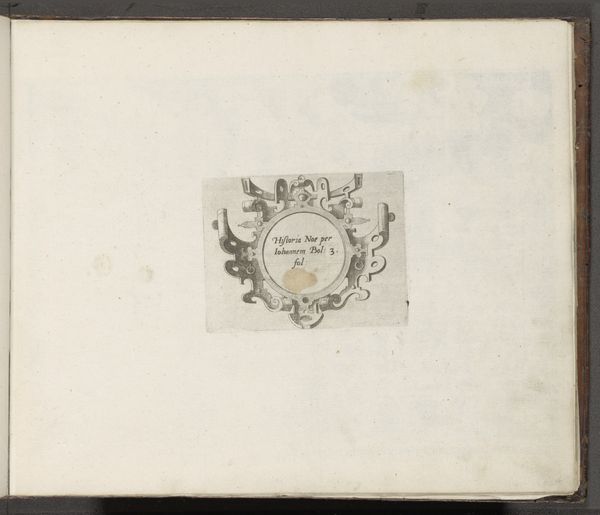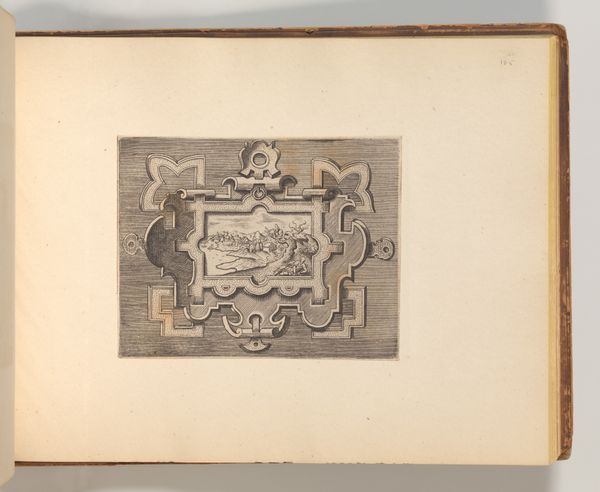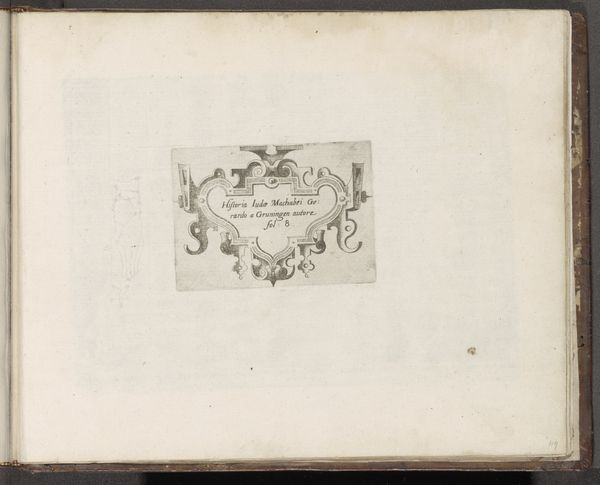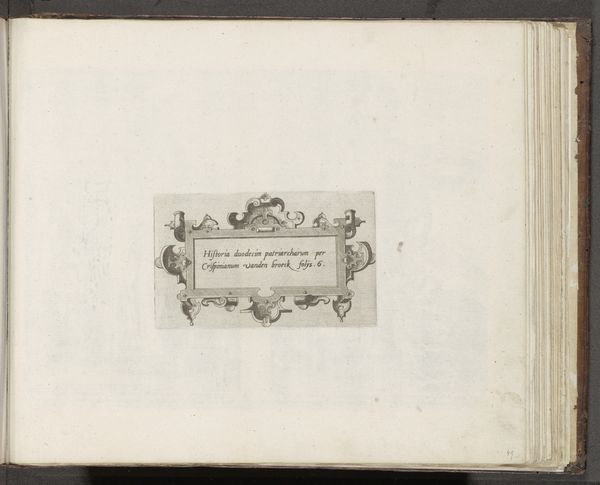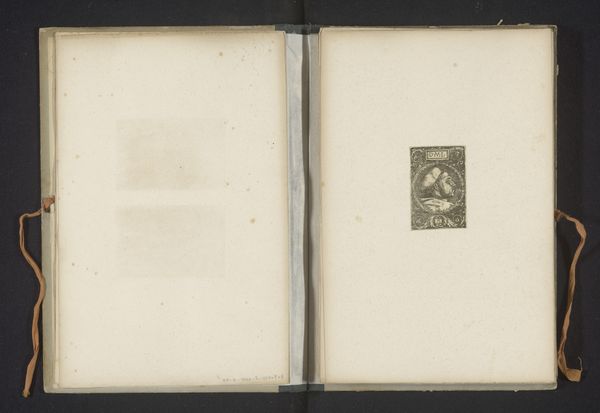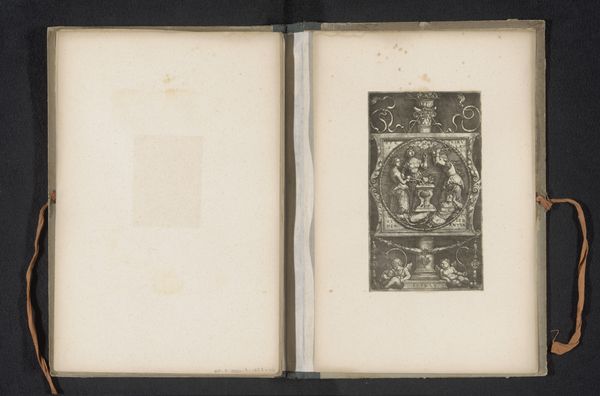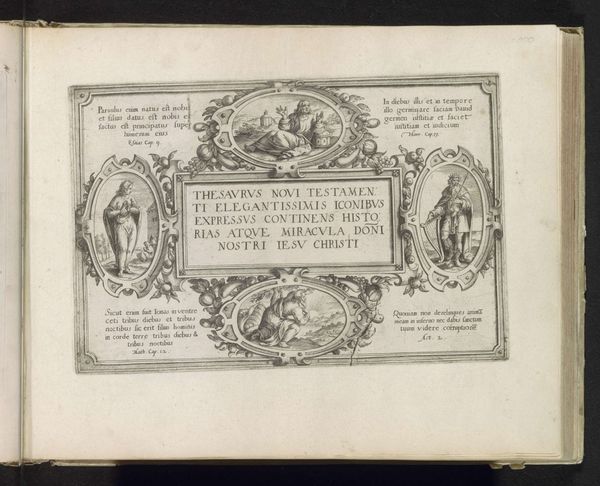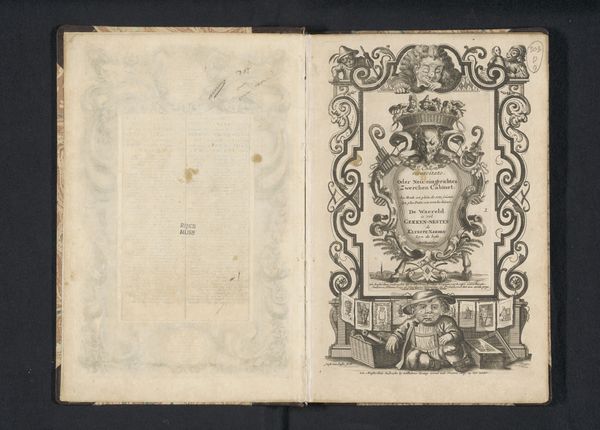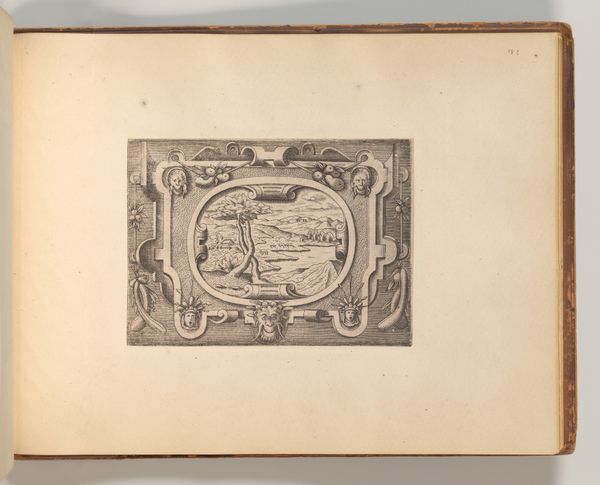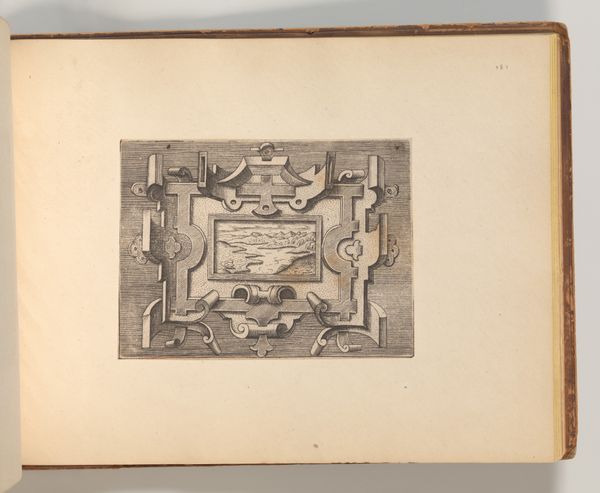
Vier vermoedelijk kerkelijke gebouwen en een fotoreproductie van een afbeelding van Christus met een man aan zijn voeten before 1864
0:00
0:00
drawing, print, engraving, architecture
#
drawing
# print
#
engraving
#
architecture
#
building
Dimensions: height 187 mm, width 209 mm
Copyright: Rijks Museum: Open Domain
Curator: Let’s discuss this fascinating page attributed to M. Petagna, bearing the title "Vier vermoedelijk kerkelijke gebouwen en een fotoreproductie van een afbeelding van Christus met een man aan zijn voeten," which translates to "Four presumably ecclesiastical buildings and a photographic reproduction of an image of Christ with a man at his feet," created before 1864. It appears to be a page from a book of engravings and prints. What strikes you initially about this spread? Editor: The contrasting layout immediately catches my attention. The left page is deliberately empty, almost raw, in stark contrast with the complex framing and varied subjects on the right page. The materiality suggests a planned presentation, an intentional framing, both within the images and of the overall design. It almost elevates printmaking as a craft and visual experience beyond its functional reproduction value. Curator: Precisely! The right page is a deliberate compilation of images – "Icones Romanorum Pontificum," essentially images of Roman pontiffs. Note how the images of ecclesiastical buildings and Christ are carefully framed and presented with ornamentation, indicative of the powerful cultural narratives around religious and political institutions during that time. We can see this framed presentation as a specific type of control and dissemination of the Church’s power to a broader public. Editor: It begs the question of how and where these engravings would have been circulated and consumed, impacting the views and ideas of those engaging with them. The contrast of detailed buildings and the singular figures relates to a question of scale, specifically between an institution and its individual adherents. How are relationships between sacred images and the structures within which those images reside impacted through reproduction? Curator: The architecture stands as a powerful symbolic anchor. I find it especially pertinent that the date falls before 1864; a time when the church was struggling to maintain temporal power in the face of rising secularism and unification movements. The visual rhetoric here, with its presentation of order and tradition, becomes a powerful assertion of authority. We have the title “Romanorum Pontificum…Ecclesiam Christi Gubernarunt” framing these images. The means of production itself – print and engraving – speaks to reproducibility, therefore broader control over cultural narratives. Editor: Looking closely at the engraving, you see a real consideration of craft, material value. Even the wear and tear of the pages suggest a certain mode of use – handled, looked at over time. This artwork, as a physical object, tells the story of the ways cultural and political authority interact with modes of production and distribution. Curator: Absolutely, examining this page prompts us to consider not only the representations of power and faith, but also the physical means through which those images shaped socio-political realities. Editor: It is more than just an image. The material composition, the arrangement – they create layers of context and reveal power structures. This piece helps to examine what an art object is composed of, how it circulated, and, thus, the function and production of knowledge that the artwork itself represents.
Comments
No comments
Be the first to comment and join the conversation on the ultimate creative platform.
